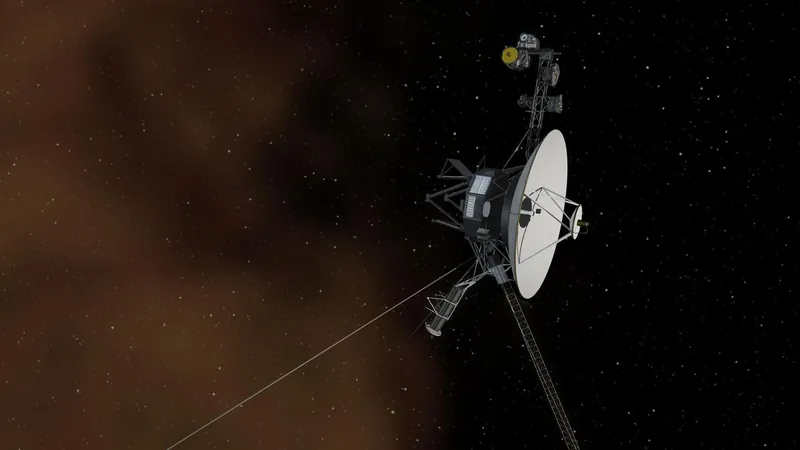
Voyager 1 Triumphs Again! NASA Restores Communication with the Milestone Spacecraft
2024-11-29
Author: Jia
NASA has delivered thrilling news: its iconic Voyager 1 spacecraft has regained communication after experiencing a significant hiccup in October that rendered it silent. This monumental mission, now an astonishing 47 years old, marks a remarkable journey of over 15.4 billion miles (24.9 billion kilometers) from Earth, traveling farther with every heartbeat of time.
As Voyager 1’s power supply, reliant on decaying plutonium, dwindles, only four of its scientific instruments remain functional. It’s remarkable that these instruments are still operational, considering they operate in extreme temperatures below their initial design specifications. This durability speaks volumes about human ingenuity and engineering.
In October, when engineers attempted to activate a heater to warm the instruments, they inadvertently triggered a safety mechanism due to low power levels. Voyager 1's protective systems automatically shut down non-essential components to conserve energy, but in doing so, the main X-band transmitter was turned off, leaving only the low-power S-band transmitter active. This switch meant signals could not reach NASA's Deep Space Network, effectively silencing Voyager 1.
However, hope was not lost! NASA engineers successfully diagnosed and resolved the issue early in November. By November 18, communication on the X-band was restored, allowing Voyager 1 to resume transmitting valuable scientific data. The spacecraft is now sending information from its four remaining instruments: the Low-Energy Charged Particle Experiment, the Cosmic-Ray Telescope, the Triaxial Fluxgate Magnetometer, and the Plasma Waves Experiment.
This isn't the first time Voyager 1 has faced communication hurdles—its age is becoming increasingly evident. The spacecraft struggled with distorted telemetry in 2022 and 2023, and its twin, Voyager 2, also encountered communication challenges recently. Every malfunction raises concerns about the longevity of these venerable explorers, especially given their unprecedented distance from home, where they navigate treacherous, frigid expanses.
Yet, remarkable as it may seem, both Voyager spacecraft are defying expectations, continuing to provide data long past their planned missions. Notably, Voyager 2 was compelled to shut down its Plasma Science instrument in September, the first such action in 16 years. Each spacecraft loses around 4 watts of energy annually from their diminishing power supplies, leading to slow but inevitable obsolescence.
If Voyager 1 and Voyager 2 can celebrate their 50th anniversary in space, it will be a testament to human achievement in space exploration. Their legacy is not just about survival; it’s about the wealth of knowledge they’ve brought back, including groundbreaking discoveries about the gas giants and their moons, the intricacies of volcanic Io, and the mysteries of the outer solar system.
As they journey through interstellar space, these two probes will continue their solitary trek around the galaxy long after they cease to function. The adventure of Voyager is far from over, and as humanity looks to the stars, the tales of Voyager 1 and 2 will inspire future generations. Their story is only just beginning! 🚀✨




 Brasil (PT)
Brasil (PT)
 Canada (EN)
Canada (EN)
 Chile (ES)
Chile (ES)
 España (ES)
España (ES)
 France (FR)
France (FR)
 Hong Kong (EN)
Hong Kong (EN)
 Italia (IT)
Italia (IT)
 日本 (JA)
日本 (JA)
 Magyarország (HU)
Magyarország (HU)
 Norge (NO)
Norge (NO)
 Polska (PL)
Polska (PL)
 Schweiz (DE)
Schweiz (DE)
 Singapore (EN)
Singapore (EN)
 Sverige (SV)
Sverige (SV)
 Suomi (FI)
Suomi (FI)
 Türkiye (TR)
Türkiye (TR)